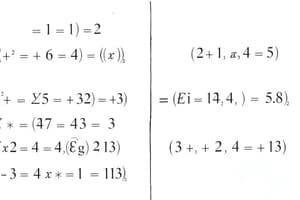Podcast
Questions and Answers
What is the purpose of using inverse operations in solving equations?
What is the purpose of using inverse operations in solving equations?
- To skip steps in solving the equation
- To complicate the equation
- To introduce errors in the calculation
- To keep the equation balanced (correct)
Which property works with multiplication and division to produce a value of 1?
Which property works with multiplication and division to produce a value of 1?
- Cubed Root Property
- Square Root Property
- Multiplicative Inverse Property (correct)
- Additive Inverse Property
What do opposites numbers do when added together?
What do opposites numbers do when added together?
- They give a sum of 0 (correct)
- They give a sum of 1
- They double the result
- They remain unchanged
How are inverse operations related to isolating variables in equations?
How are inverse operations related to isolating variables in equations?
What value does the additive inverse property produce when adding opposite numbers?
What value does the additive inverse property produce when adding opposite numbers?
What property states that when the same amount is added to both sides of an equation, the equation will remain balanced and true?
What property states that when the same amount is added to both sides of an equation, the equation will remain balanced and true?
Which operation is used in conjunction with the additive property of equality to create a zero pair in equations?
Which operation is used in conjunction with the additive property of equality to create a zero pair in equations?
What does the multiplicative property of equality state?
What does the multiplicative property of equality state?
Which pair of operations are commutative inverse operations?
Which pair of operations are commutative inverse operations?
What are the reciprocols of the trigonometric functions cosecant, secant, and cotangent respectively?
What are the reciprocols of the trigonometric functions cosecant, secant, and cotangent respectively?
Flashcards are hidden until you start studying




